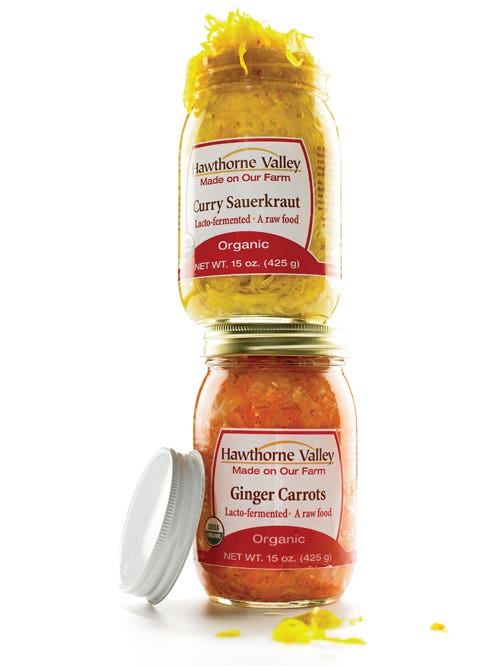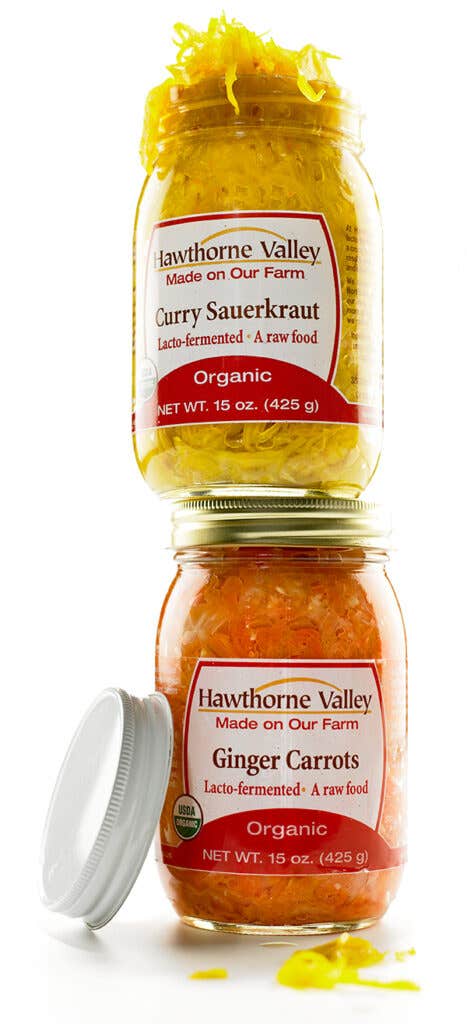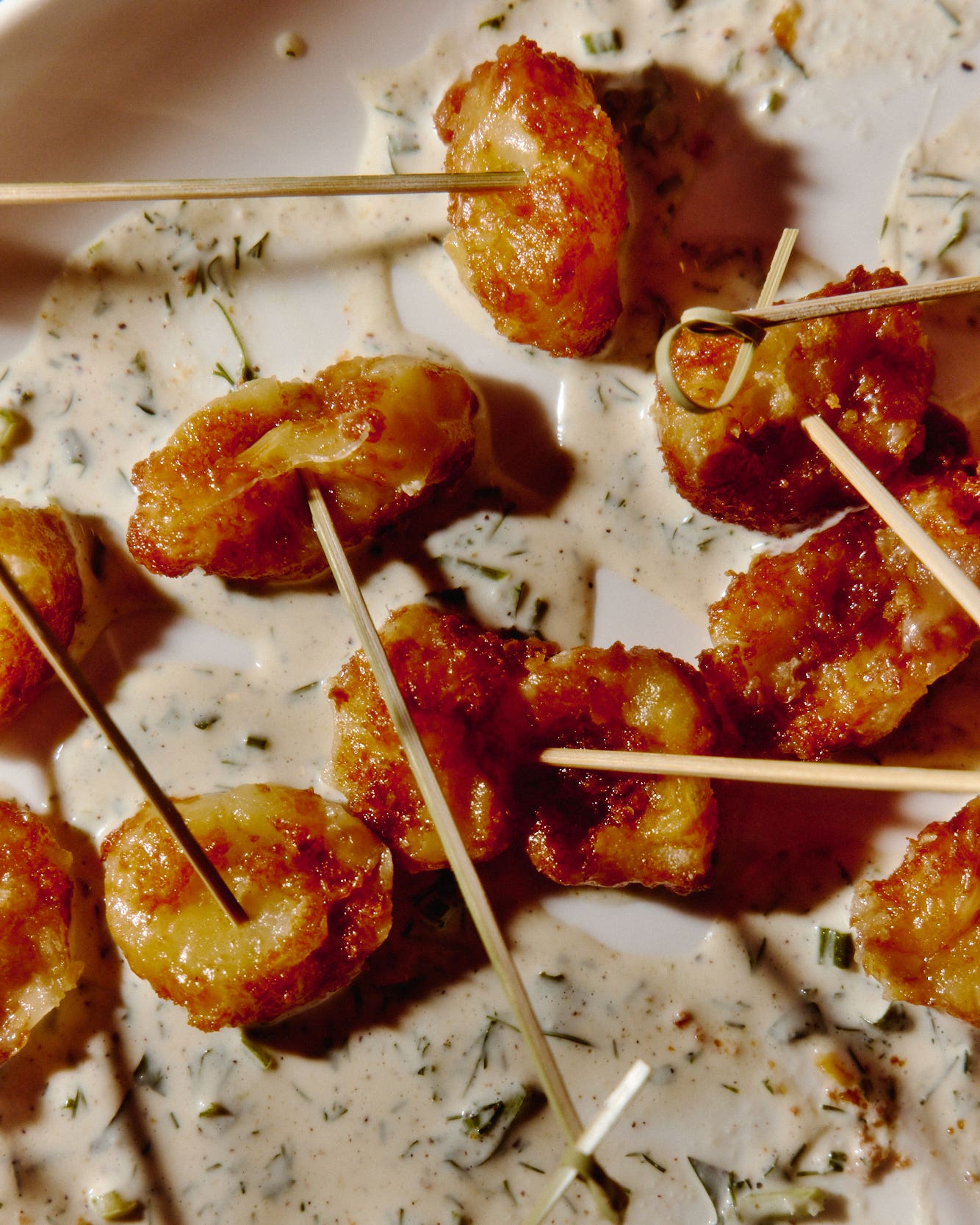

I was never crazy about kraut, but one evening, as I wandered through the aisles of my Brooklyn co-op market, a jar stopped me in my tracks. It didn't look like any sauerkraut I'd ever seen—the glass practically glowed with ruby shreds of pickled red cabbage. Intrigued, I tossed it in my basket. Once home, I grabbed a fork and took a bite. It was bracingly tart and unexpectedly crisp, with a lively, almost effervescent zip. It bore no resemblance to the lifeless, soggy stuff I'd known before. I kept eating, dreaming of the fish tacos, dumplings, and bigos I could top with the snappy crimson tendrils. I called the producer to see what else they made.
A few days later, a carton loaded with jars arrived from Hawthorne Valley, a biodynamic farm and agricultural education center in upstate New York. I opened the box and began tasting: pungent shredded carrot, onion, and ginger; a canary yellow cabbage with finely diced turmeric root and warm cumin-y notes; a meaty-tasting kraut with juniper and caraway seeds that begged to be piled on a Reuben; and a straightforward cabbage and sea salt version that packed an eyebrow-raising tang. All the flavors sparkled, vivid and intense.
What made them so good? The process is simple: Cabbage is sliced, salted, and allowed to ferment along with carrot or onion or other seasonings. The microbes that live on its leaves proliferate, transforming it, until ultimately lactobacilli acidify the cabbage, giving it sauerkraut's characteristic tartness and preventing spoilage. At this point, most commercial sauerkrauts are pasteurized, which produces a shelf-stable product, but also kills the probiotic bacteria, mutes the vibrant flavors, and softens the firm texture. The secret to Hawthorne Valley's exceptional handmade creations is that they aren't heat-treated, so the enzymes and microbes are still thriving when they leave the farm—al dente bite and lip-smacking pucker preserved.
Since that fateful evening, I've had a sauerkraut renaissance. I use Hawthorne Valley's krauts in cooked dishes, stuffed into pierogies and simmered in choucroute garnie, where its crisp acidity balances the richness of the meats. But I love it best raw: the ginger carrot version tossed into salads; the caraway seed one on sandwiches; curry kraut nibbled like a pickle with rice; and the cool, crunchy plain style heaped on all sorts of grilled sausages. Finally, when the jars are nearly empty, I pour the remaining juice into a bloody mary.
Hawthorne Valley Sauerkraut, $5 for a 15-ounce jar at hawthornevalleyassociation.org (price subject to change).
Keep Reading
Continue to Next Story










